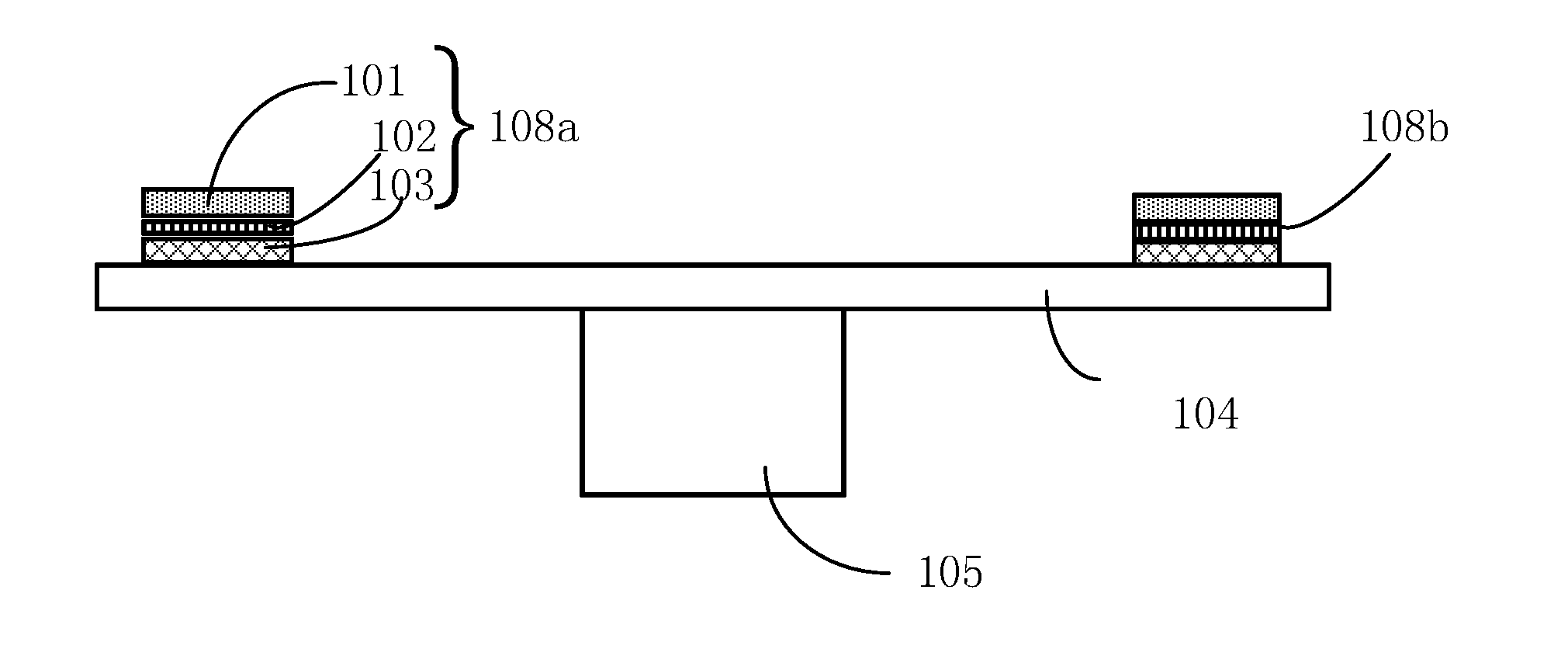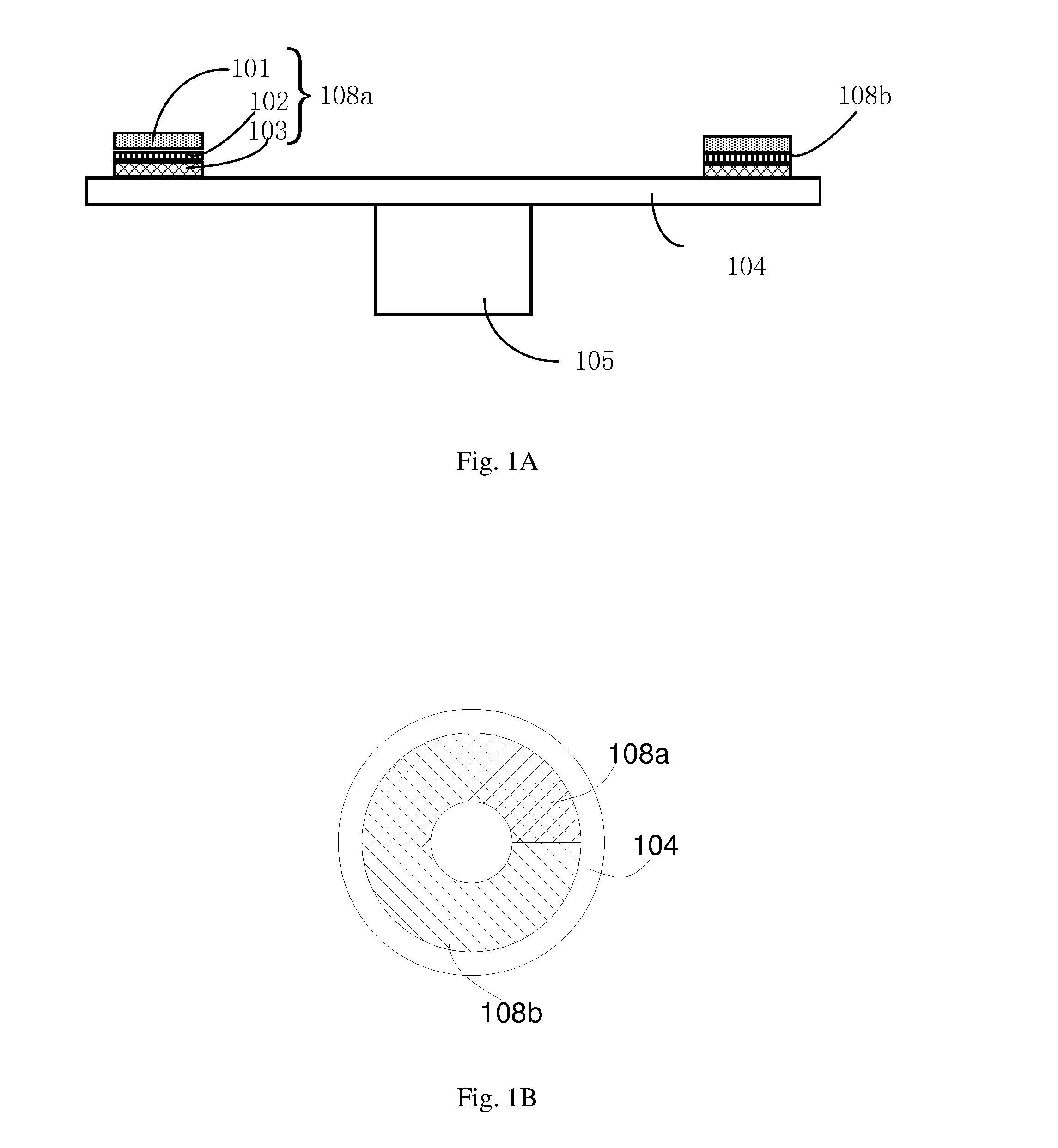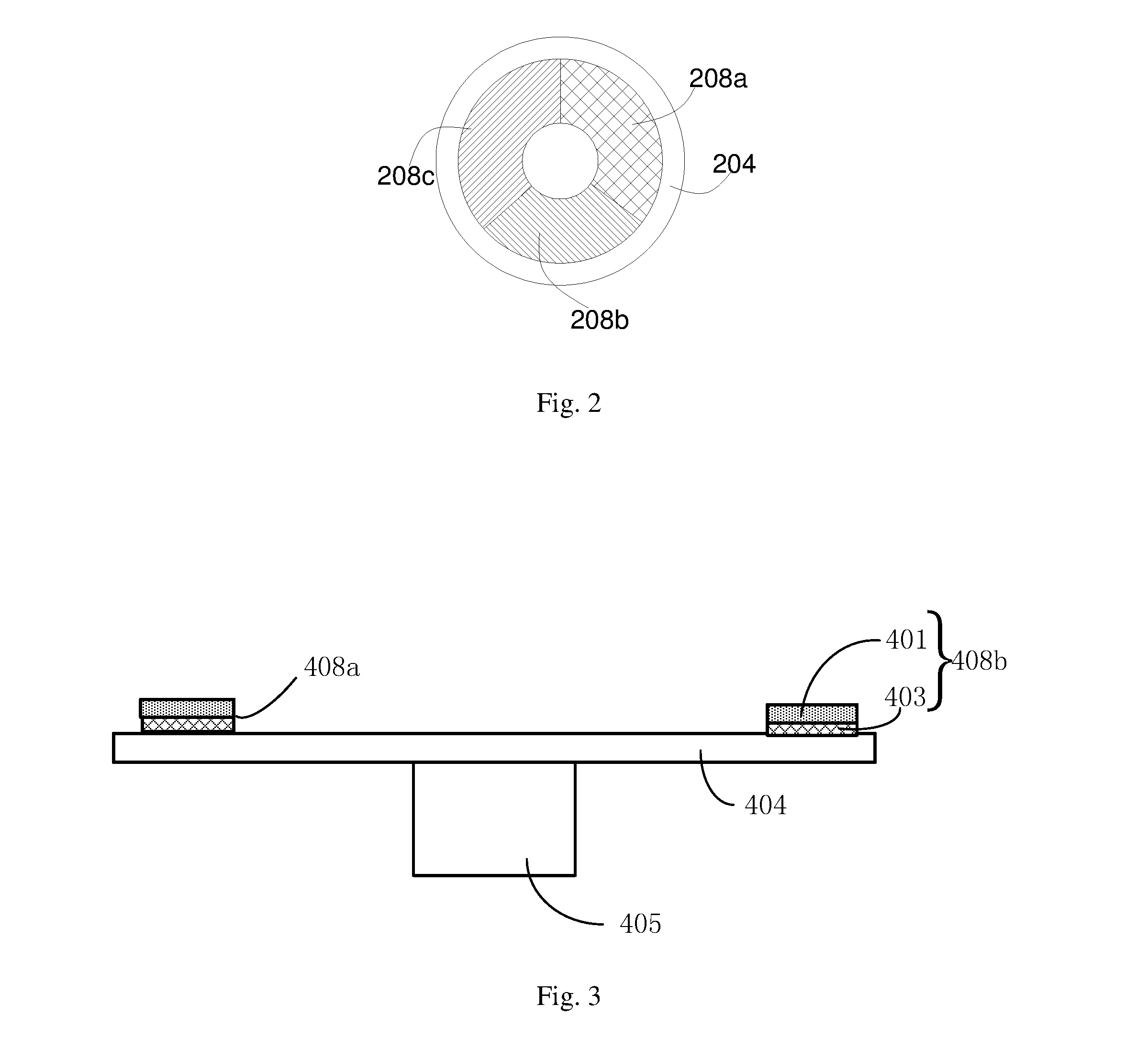Wavelength conversion device, and light source system and projection system therefor
a conversion device and wavelength technology, applied in the field of illumination and display technologies, can solve the problems of inconvenient metal substrate work, poor conductivity of silica gel overall, and inconvenient use of high-power excitation light, so as to reduce material use, reduce cost, and high quality color wheels
- Summary
- Abstract
- Description
- Claims
- Application Information
AI Technical Summary
Benefits of technology
Problems solved by technology
Method used
Image
Examples
first embodiment
[0053]Referring to FIGS. 1A and 1B, in this embodiment, the wavelength conversion device includes a support structure 104 and two wavelength conversion modules 108a and 108b. Each wavelength conversion module includes a ceramic carrier 103, and a phosphor layer and a reflective layer 102 disposed on the ceramic carrier 103.
[0054]As shown in FIGS. 1A and 1B, the support structure 104 is a round base plate, preferably formed of a metal, a metal alloy, or a composite material of metal and inorganic materials. The metal may be aluminum, copper, silver, etc. The metal alloy may be brass, aluminum alloy, copper aluminum alloy, etc. The composite material of metal and inorganic material is a composite of metal and inorganic material, such as diamond-copper, boron nitride-copper, etc. The support structure has a ring shaped region which is centered on the center of the round base plate.
[0055]There are two ceramic carriers 103, respectively shaped like a half of a ring; they are arranged tog...
second embodiment
[0067]As shown in FIG. 2, in this embodiment, the support structure 204, drive mechanism, ceramic carriers, adhesives, reflective layers and phosphor layers are similar to those in the first embodiment and detail descriptions are omitted here.
[0068]A difference between this embodiment and the first embodiment is that, there are three wavelength conversion modules 208a, 208b and 208c, each having an arc shape; they are arranged on and adhered to a ring shaped region of the support structure 204 to form a ring shape. Moreover, the phosphor material in the phosphor layer on each ceramic carrier is a monochromatic phosphor that is excited to emit a converted light of one color, and different colored phosphor materials are provided on different ceramic carriers.
[0069]For example, as shown in FIG. 2, the phosphor materials on the three wavelength conversion modules 208a, 208b and 208c are respectively red phosphor, yellow phosphor and orange phosphor. The sequence of the three phosphors c...
third embodiment
[0074]In this embodiment, except for the reflective layer, the other components are similar to those of the first and second embodiments, and detailed descriptions are omitted here.
[0075]A difference between this embodiment and the first and second embodiments is that for the reflective layer, a diffuse reflection layer replaces the total reflection film.
[0076]The diffuse reflection layer is located between the phosphor layer and the ceramic carrier, and includes white scattering particles, which function to scatter the incident light. The white scattering particles are typically a powder of a salt or an oxide, and the particle size ranges from 50 nanometers to 5 microns. Examples include aluminum oxide, titanium oxide, aluminum nitride, magnesium oxide, boron nitride, zinc oxide, zirconium oxide, barium sulfate, etc. which are ultra-white single powder particles, or a mixture of two or more of the above powder particles. These white scattering material absorbs virtually no light, a...
PUM
| Property | Measurement | Unit |
|---|---|---|
| particle size | aaaaa | aaaaa |
| particle size distribution | aaaaa | aaaaa |
| reflectivity | aaaaa | aaaaa |
Abstract
Description
Claims
Application Information
 Login to View More
Login to View More - R&D
- Intellectual Property
- Life Sciences
- Materials
- Tech Scout
- Unparalleled Data Quality
- Higher Quality Content
- 60% Fewer Hallucinations
Browse by: Latest US Patents, China's latest patents, Technical Efficacy Thesaurus, Application Domain, Technology Topic, Popular Technical Reports.
© 2025 PatSnap. All rights reserved.Legal|Privacy policy|Modern Slavery Act Transparency Statement|Sitemap|About US| Contact US: help@patsnap.com



